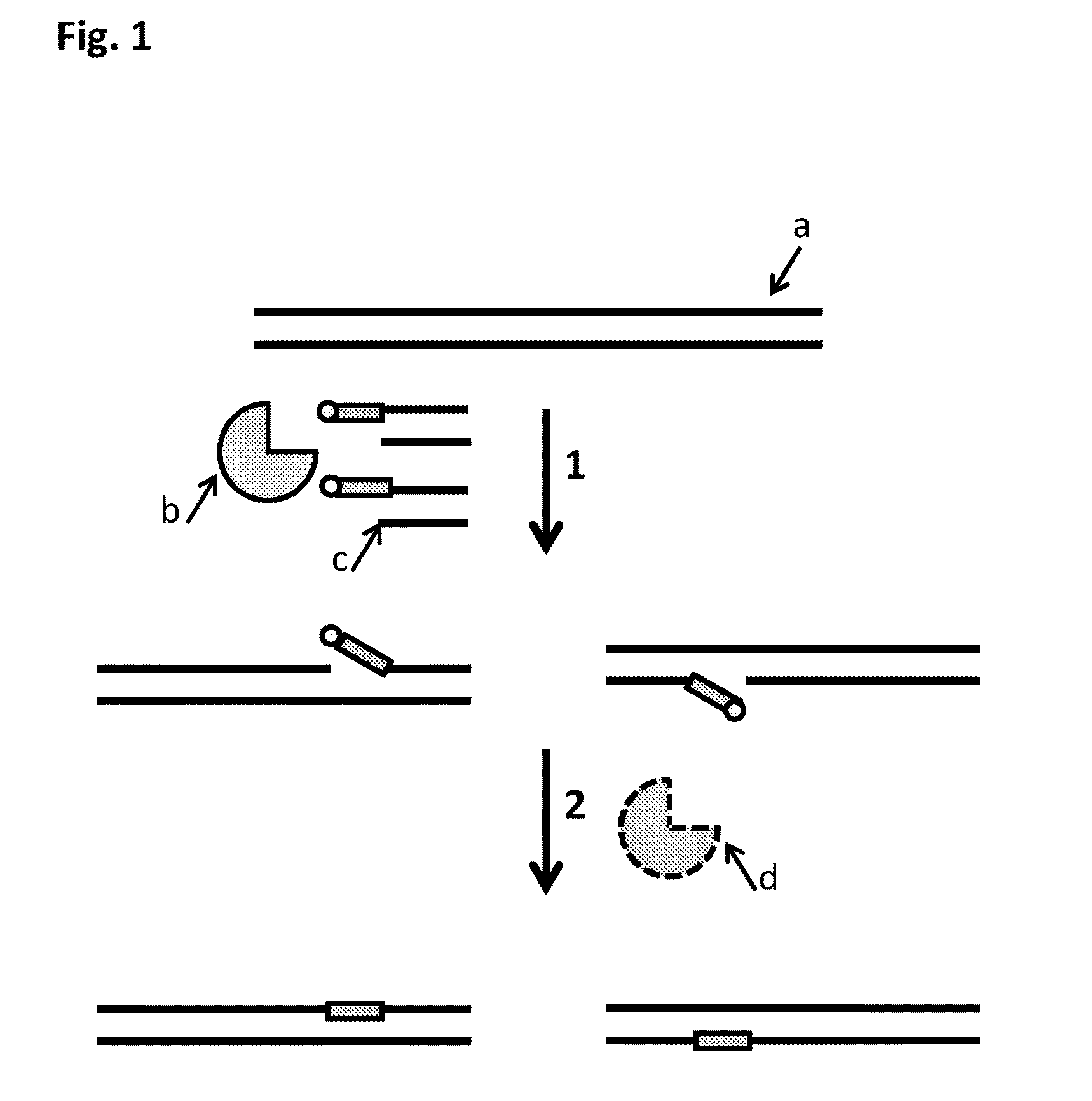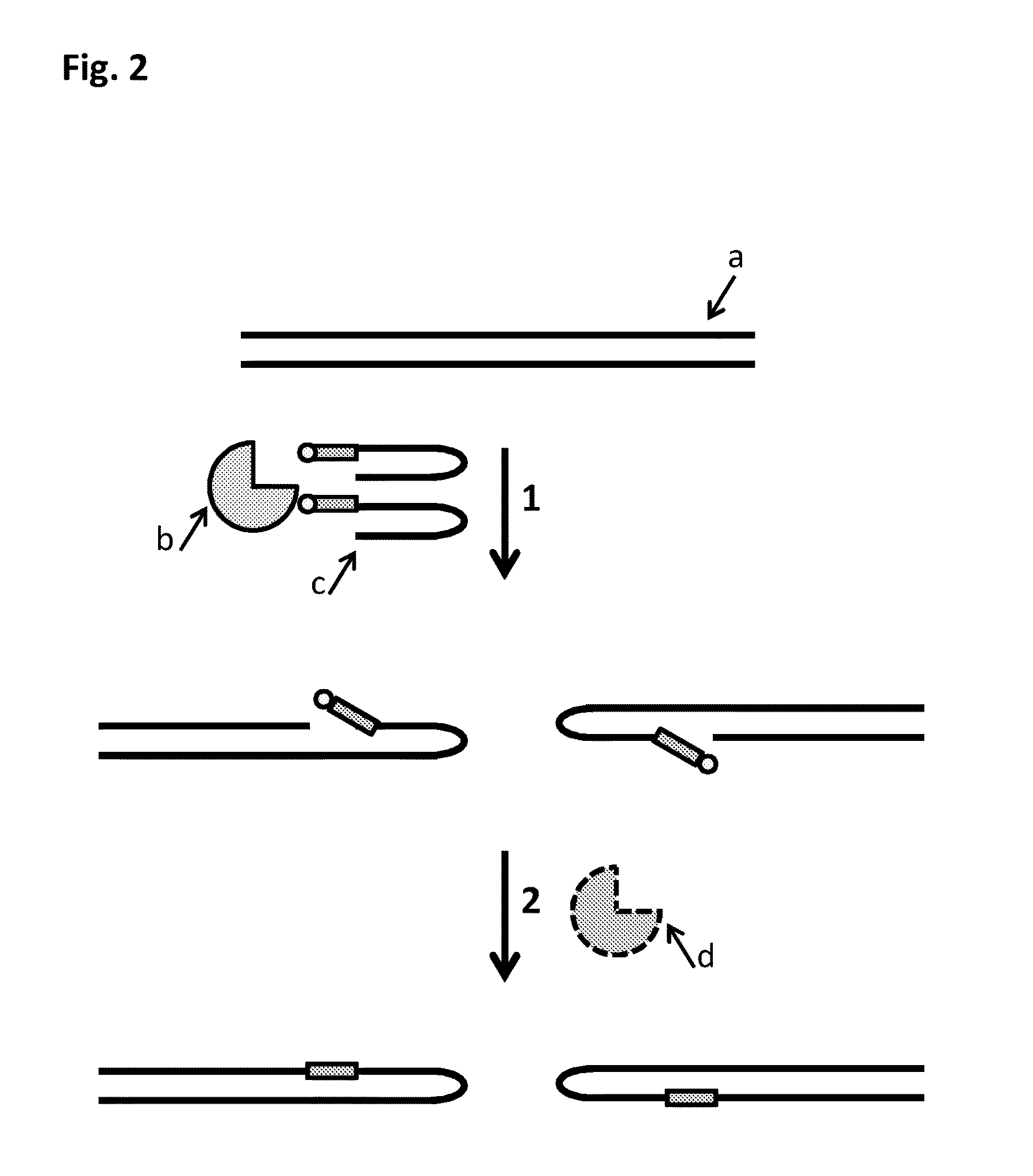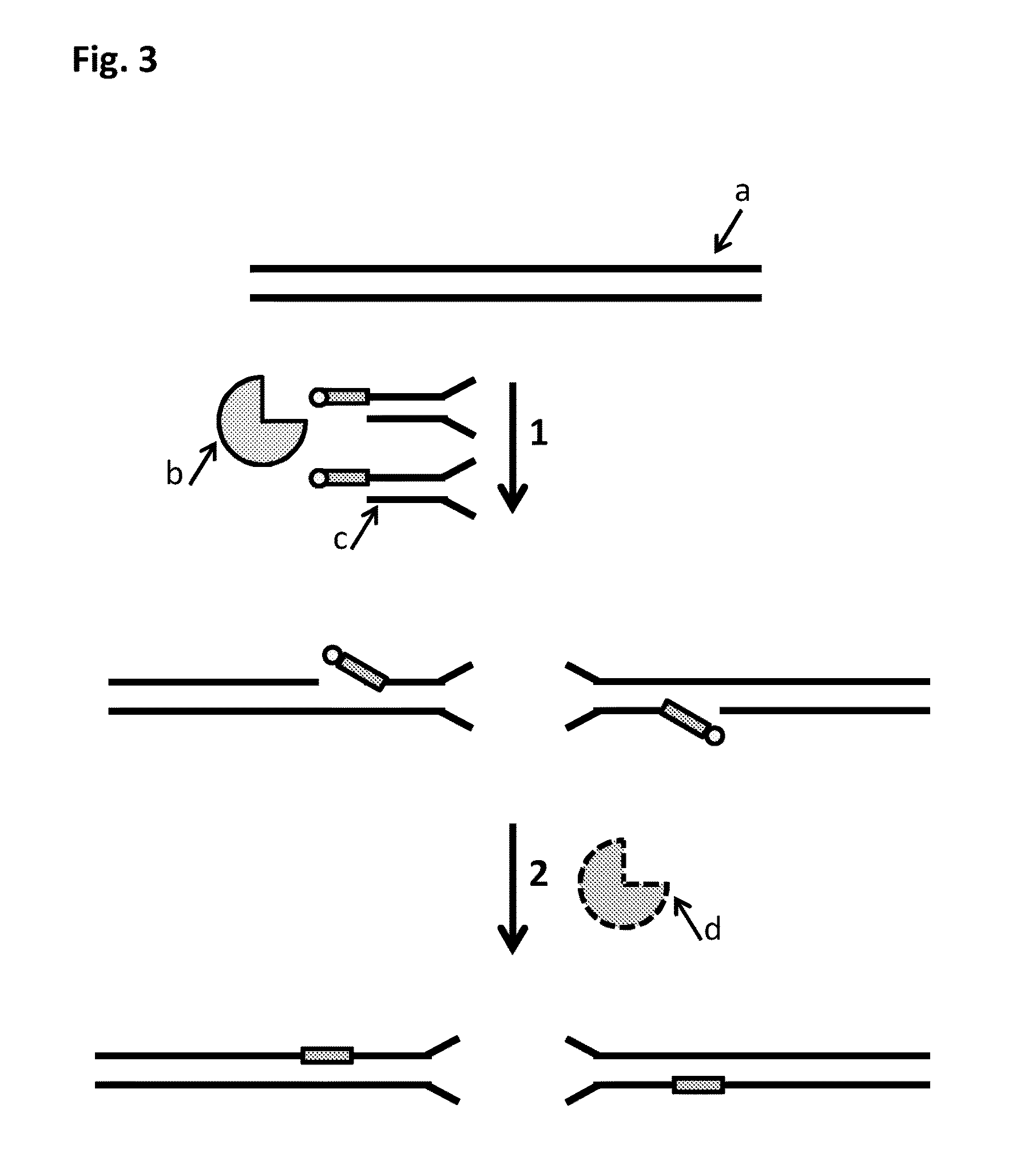Method
a double stranded polynucleotide and template technology, applied in the field of methods for modifying double stranded polynucleotides, can solve problems such as double stranded constructs, and achieve the effect of convenient characterisation
- Summary
- Abstract
- Description
- Claims
- Application Information
AI Technical Summary
Benefits of technology
Problems solved by technology
Method used
Image
Examples
example 1
[0291]This example shows that the MuA transposase was able to insert MuA substrates which contained at least one nucleoside which was not present in the template polynucleotide into a template double-stranded polynucleotide. In this example the one nucleotide which was not present in the template was a dUMP.
Materials and Methods
1.1 Anneal of DNA Strands to Form the MuA Substrates
[0292]MuA substrate 1 and 2 were prepared as shown in Table 4 below. The construct A and B sample mixtures were then heated to 95° C. for 2 minutes and then cooled to 16° C. at a rate of 2° C. per minute. This allowed SEQ ID NO: 27 which was attached to SEQ ID NO: 24 by four C3 spacer units to anneal to either SEQ ID NO: 28 (MuA substrate 1) or SEQ ID NO: 26 (MuA substrate 2). The DNA substrate designs of the two MuA substrates formed are shown in FIG. 15.
TABLE 4MuAMuAFinalReagentsubstrate 1substrate 2ConcentrationsWater12 uL 12 uL 0.25M NaCl, 50 mM Tris4 uL4 uL50 mM NaCl,pH 7.510 mM TrisSEQ ID NO: 27 attach...
example 3
[0300]This example describes the sample preparation process described in FIG. 19 which was used to fragment Lambda DNA into ˜5-10 kB fragments. The fragments which were produced by the sample prep were then passed through a nanopore, with their movement controlled by a helicase enzyme. Markers which were present in the Y-shaped MuA substrates and the hairpin MuA substrates (iSpC3 spacers) that were inserted into the double-stranded Lambda DNA (SEQ ID NO: 29 shows the template strand sequence only) were identified by characteristic current blockades. The observance of the characteristic blocks showed that the sample preparation procedure had been successful.
Materials and Methods
3.1 Anneal of DNA Strands to Form Y-Shaped and Hairpin MuA Substrates
[0301]The Y-shaped and hairpin MuA substrates were prepared as shown in Table 10 below. The sample mixtures which contained the DNA to form the Y-shaped and hairpin MuA substrates were then heated to 95° C. for 2 minutes and then cooled to 16...
example 4
[0309]This example describes an alternative sample preparation process illustrated in FIG. 22 which was used to fragment Lambda DNA into ˜5-10 kB fragments. The fragments which were produced by the sample prep were then passed through a nanopore, with their movement controlled by a helicase enzyme. Markers which were present in the Y-shaped MuA substrates and the hairpin MuA substrates (iSpC3 spacers) that were inserted into the double-stranded Lambda DNA (SEQ ID NO: 29 shows the template strand sequence only) were identified by characteristic current blockades. The observance of the characteristic blockades showed that the sample preparation procedure had been successful.
Materials and Methods
4.1 Anneal of DNA Strands to Form Y-Shaped and Hairpin MuA Substrates
[0310]The Y-shaped and hairpin MuA substrates were prepared as described in Example 3.1 above. Volumes, concentrations and sequences that were used in this example are detailed in table 14 below. The DNA substrate designs of t...
PUM
| Property | Measurement | Unit |
|---|---|---|
| voltage | aaaaa | aaaaa |
| voltage | aaaaa | aaaaa |
| voltage | aaaaa | aaaaa |
Abstract
Description
Claims
Application Information
 Login to View More
Login to View More - R&D
- Intellectual Property
- Life Sciences
- Materials
- Tech Scout
- Unparalleled Data Quality
- Higher Quality Content
- 60% Fewer Hallucinations
Browse by: Latest US Patents, China's latest patents, Technical Efficacy Thesaurus, Application Domain, Technology Topic, Popular Technical Reports.
© 2025 PatSnap. All rights reserved.Legal|Privacy policy|Modern Slavery Act Transparency Statement|Sitemap|About US| Contact US: help@patsnap.com



